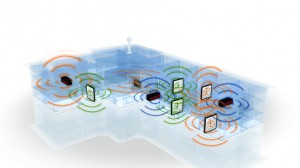Saving the Facility Manager Time with Wireless Clocks
As institutions around the globe gravitate toward more efficient, systematic ways of managing their buildings, there are particular aspects of this process that commonly go overlooked. For instance, facility managers may not expect that the clocks throughout the building could play an important part in enhancing its functionality. The truth is, as facility managers implement more technology into a building, such as time attendance and upgraded security surveillance, upgrading to a wireless clock system in addition will help the facility manager more than they could ever expect.
Wireless clocks are affordable, reliable, and have built-in features that make maintenance a breeze. Throughout their busy day, any way in which the facility manager can save time is of value, and that’s where the clocks come in. This article will explain the ways that, while most may not expect it, wireless clocks help an institution become more efficient, as well as save the facility manager’s valuable time.
Increasing Efficiency: Accurate Time Displays
Faculty in any given institution uses the clocks on the wall on a regular basis. Hospital employees look to the clocks to track their patient’s condition, teachers reference the classroom clock make decisions on how to conduct the remainder of their class, travelers constantly check the clocks in a transportation facility while awaiting their departure. These are just a few examples of ways the people within these institutes rely heavily on an accurate time display. With wireless clocks, the faculty is never steered wrong. These clocks have the ability to receive a signal from the transmitter multiple times throughout the day. By receiving the time consistently, the clocks are not given the opportunity to drift from their accurate time, guaranteeing a correct time reference for the entire faculty in the building. And when provided with a consistently accurate time source, the faculty can better manage their time.
Saving Time: Checking Battery life and Signal
Unlike the quartz clocks that many institutions use on a regular basis, some wireless clocks have built-in features to monitor and check battery levels. Instead of waiting until the clock dies and drifts from the accurate time, facility managers can run tests on clocks to see how soon batteries will need changing. With a more proactive approach to maintaining the clocks, managers can schedule and allocate time to perform these tests, relinquishing the interruption and inconvenience of a down clock. Additionally, some wireless clocks have a built-in signal checking mechanism, where the facility manager can check the strength of the signal from the transmitter to the clock. During installation, this feature allows the facility manager to test the quality of a particular location of the building for each individual clock. Being confident that the clock will operate properly in its initial location, the facility manger will be spared of re-locating any clocks after installation.
As facility managers implement their new systems into their buildings and institutions, both the faculty and the managers experience the enhancements and improvements during the day-to-day operations. When the manager installs a synchronized wireless clock system, the building sees the improvement through time saved and the benefits of having reliable, accurate time displayed for the entire faculty.

